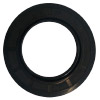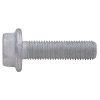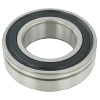Faults of independent suspension joint
- wear of the mounting holes or gaskets;
- corrosion of joint;
- cracks in the casing;
- wear of elastic ring;
- extension of the case spring.
Symptoms of independent suspension joint faults
- hindered rotation of the steering wheel ( much more effort must be put for turning);
- knocking and crackling of the suspension;
- squeaks and rattle when you turn the steering wheel;
- increase in the body vibration overcoming the road holes.
Causes of independent suspension joint faults
- contamination of the part;
- installation of low-quality components;
- the poor quality of the road surface;
- mechanical damage;
- moisture ingress.
Diagnostics of independent suspension joint
First it should be inspected to ensure no corrosion and mechanical damage to the part. Then you can run the car test, performing maneuvers at low speed. Background noise will determine a problem with the item. The most effective way to diagnose is the joint inspection on the lift. The wheels of the car, being in suspended state, are necessary to roll. Normally, the wheels should be firmly planted, resist rolling. Do not forget to inspect the joint rubber bellows and spring washers. Corrosion often occurs on these components.
Replacement and repair of independent suspension joint
Note that after the fault diagnosis you will have two options:
- first is to restore the joints, for example, try to correct the play (it is a few millimeters) between the ball stud and the joint housing;
- second is the part replacement.
Replacing this element should be done every 40 thousand kilometers. To replace the joint, you should remove the wheel of the car, loosen the joint nut and mounting bolts. Next, install the puller and press the ball stud out of the suspension arm. Then you need to avert the arm and remove the element that requires replacement. Install a new joint, first applying high quality sealant to the arm surface.
Propshaft coupling finder for


















































































































